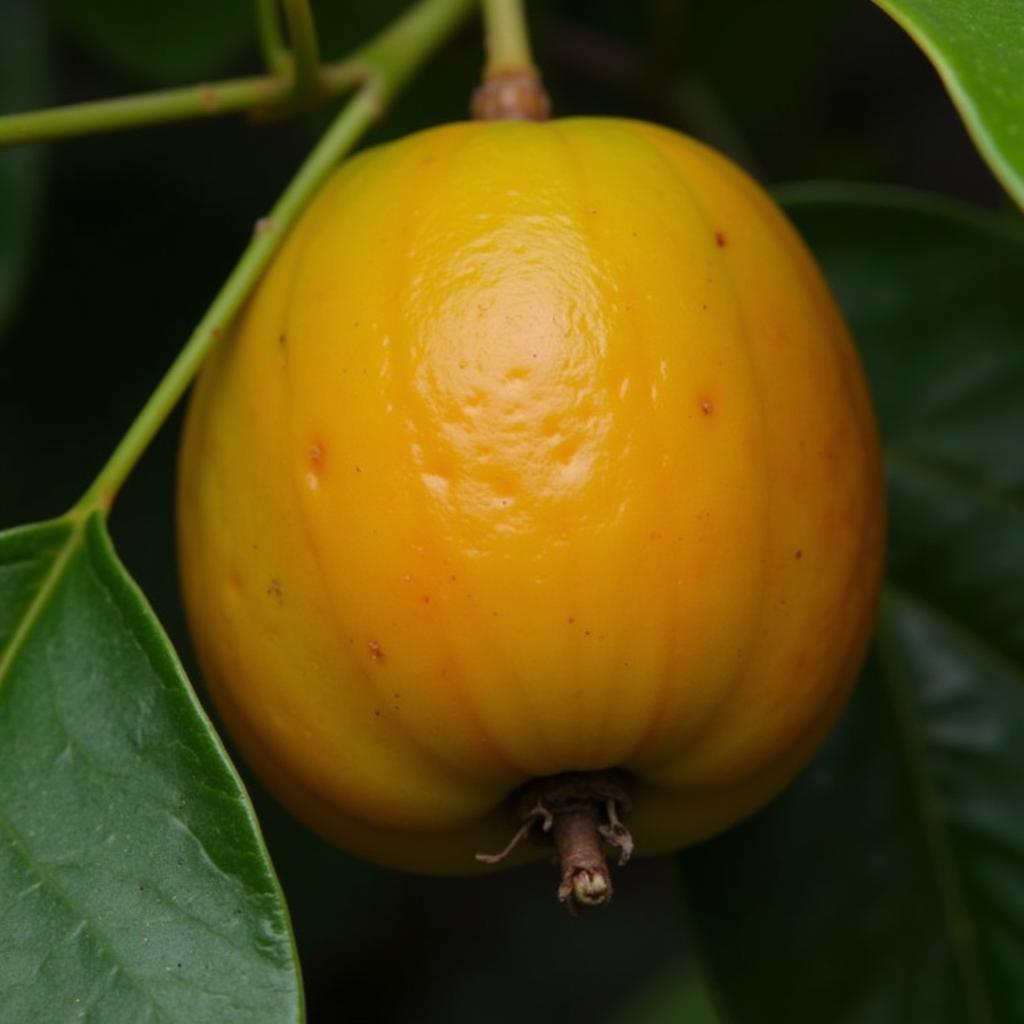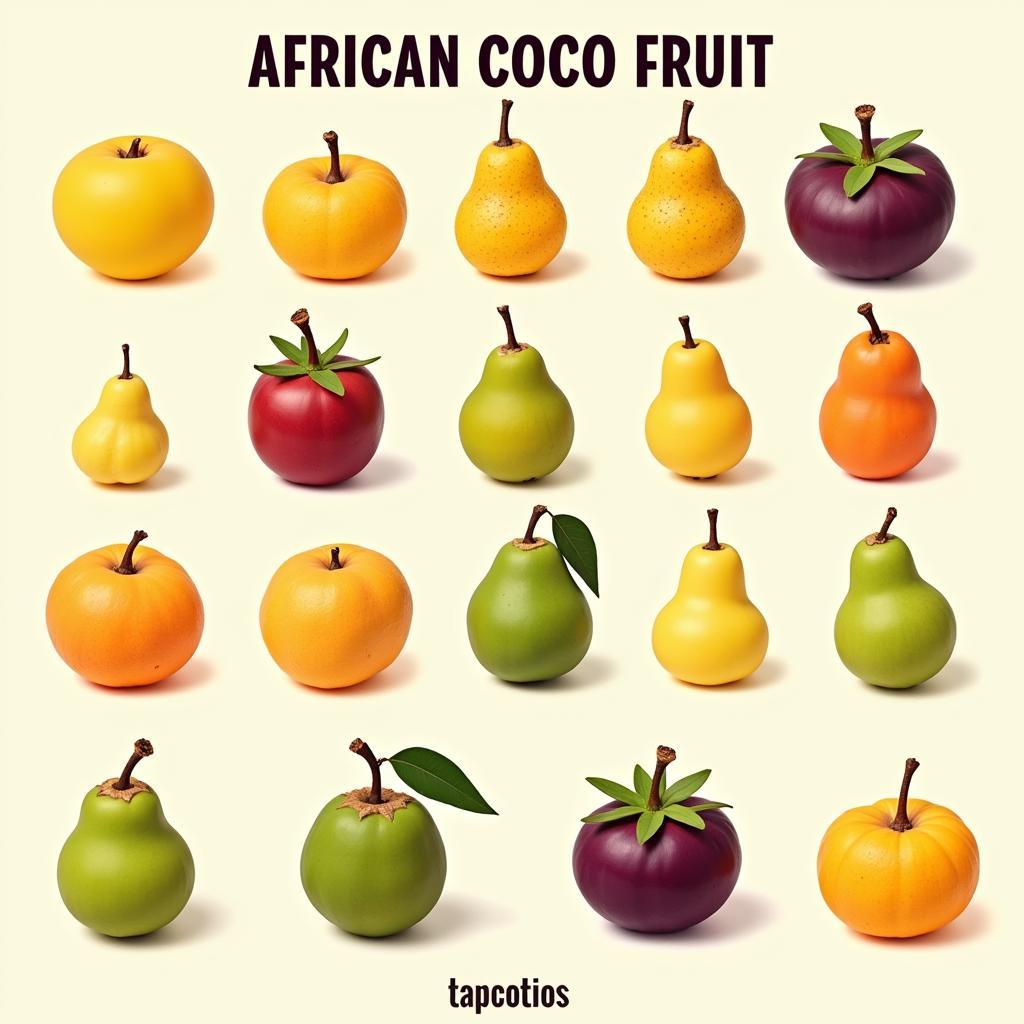Exploring the Wonders of the African Coco Fruit
The African Coco Fruit, a fascinating botanical specimen, holds a unique place in the diverse tapestry of African flora. From its intriguing appearance to its cultural significance and potential health benefits, this fruit offers a glimpse into the rich biodiversity and traditions of the continent. Let’s delve deeper into the world of the African coco fruit and uncover its secrets.
What is the African Coco Fruit?
The term “African coco fruit” can refer to a variety of fruits found across the African continent, depending on the region and local traditions. Often, it refers to fruits from the Landolphia genus, known for their milky sap and rubber production. These fruits can vary in shape, size, and taste, but they often share a common thread of cultural and historical significance within their respective communities. For instance, the Landolphia owariensis, also known as the white rubber vine, produces a fruit with a sweet, edible pulp. You can check out more about African chocolate.
 Landolphia owariensis, an African coco fruit
Landolphia owariensis, an African coco fruit
Another fruit sometimes referred to as “African coco fruit” is the Chrysophyllum albidum, also known as the African star apple. While not related to Landolphia, it shares some similarities in its use and cultural significance. This fruit boasts a smooth, purple skin and sweet, milky flesh, enjoyed as a refreshing treat in many West African countries. Want to know more about African beauty products? Check out African body lotion body shop.
The Cultural Significance of the African Coco Fruit
The African coco fruit plays a significant role in the traditions and customs of various African communities. Historically, the sap of certain Landolphia species was a valuable source of rubber, used in traditional crafts and trade. The fruits themselves are often consumed fresh, providing a source of nourishment and hydration. In some cultures, the fruit is incorporated into rituals and ceremonies, symbolizing fertility and abundance.
 African Coco Fruit in Cultural Ceremony
African Coco Fruit in Cultural Ceremony
Nutritional and Health Benefits
While research on the specific nutritional composition of all varieties of “African coco fruit” is ongoing, some species are known to be rich in vitamins, minerals, and antioxidants. The sweet pulp offers a source of natural sugars and energy. The Chrysophyllum albidum, for instance, is a good source of Vitamin C and dietary fiber. Some communities also use different parts of the plant for traditional medicine, although further scientific research is needed to validate these uses. Are you interested in African hair care? Learn more about African hair growth products that work.
What does African coconut look like?
The appearance of “African coco fruit” varies widely. Some, like the Landolphia fruits, can be round or oblong, with a tough outer skin and a soft, pulpy interior. Others, like the African star apple, are more distinctive with their vibrant purple skin and star-shaped seed arrangement. You can find out more about the appearance of certain African coco fruits by searching for specific species names. You might find articles like this: african coconut looks like ass and dick.
 Variety of African Coco Fruits
Variety of African Coco Fruits
Conclusion
The African coco fruit, in its various forms, represents a fascinating element of African biodiversity and culture. From its historical role in rubber production to its nutritional and cultural significance, this fruit offers a glimpse into the rich tapestry of life on the continent. Further research and appreciation of these unique fruits can contribute to a greater understanding of African botany, traditions, and potential health benefits. Explore more about African cuisine with this delicious african chicken stew recipe.
FAQ
-
What are the different types of African coco fruit? The term can refer to various fruits, including those from the Landolphia genus and the Chrysophyllum albidum (African star apple).
-
Where can I find African coco fruit? These fruits are primarily found in various regions across Africa, depending on the specific species.
-
What are the health benefits of African coco fruit? Some varieties are known to be rich in vitamins, minerals, and antioxidants, but more research is needed.
-
How is African coco fruit used culturally? It is used in various ways, including consumption, traditional medicine, and cultural ceremonies.
-
Is African coco fruit related to the coconut? No, despite the name, it is not related to the coconut palm.
-
What does African coco fruit taste like? The taste varies depending on the species, but it is often described as sweet.
-
Where can I learn more about specific African coco fruit varieties? Botanical databases and scientific literature can provide more detailed information.
Common Scenarios and Questions
Scenario: You’re traveling in Africa and come across a fruit labeled “African coco.”
Question: How can I identify the specific species and its properties?
Answer: Consult local guides or experts, or use a plant identification app. Be cautious about consuming unknown fruits without proper identification.
Further Exploration
Learn more about other fascinating African ingredients by checking out this article on African chocolate.
Contact Us
For any inquiries or assistance regarding African coco fruit or related topics, please contact us: Phone: +255768904061, Email: kaka.mag@gmail.com, or visit our office at Mbarali DC Mawindi, Kangaga, Tanzania. Our customer service team is available 24/7.

